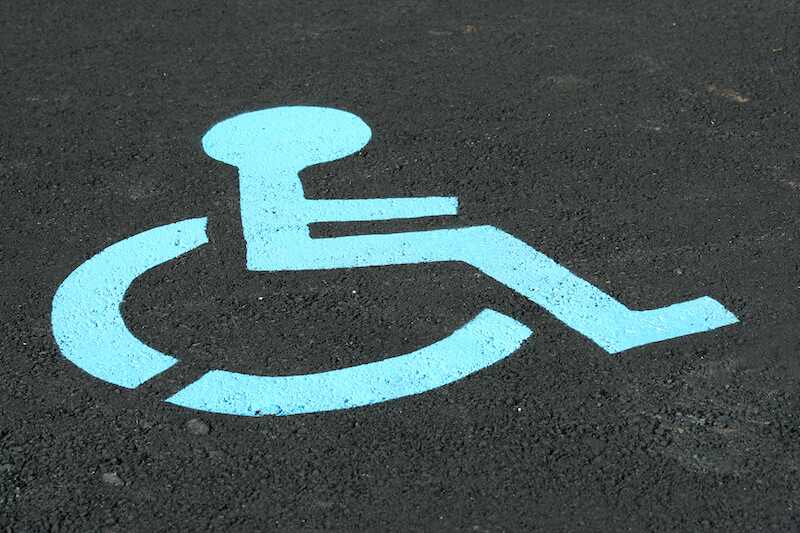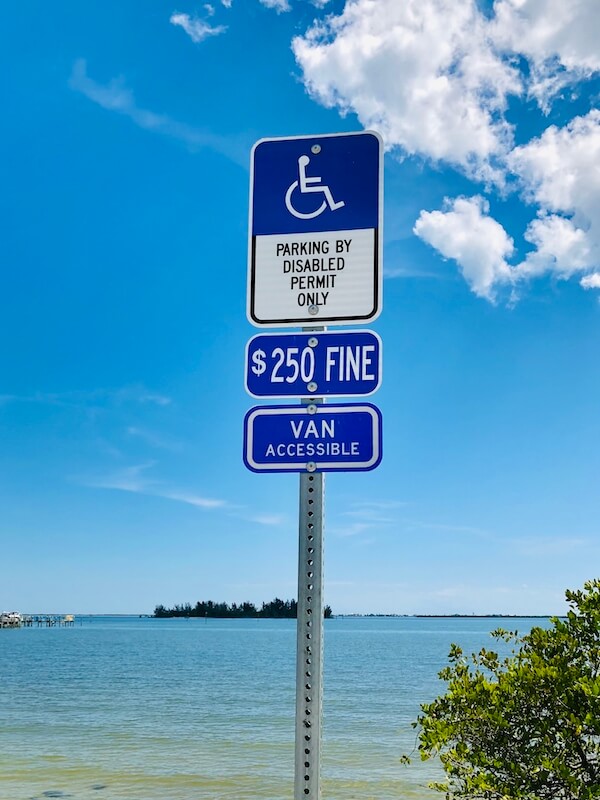Accessible parking spaces are more than just painted lines; they represent a commitment to inclusivity and equal rights. This comprehensive guide will navigate you through the intricacies of handicapped parking regulations, offering a detailed understanding of their importance and legal requirements.

Section 1: The Need for Accessible Parking
Accessible parking spaces are crucial to creating an inclusive and welcoming environment for all. These spaces are not just a convenience; they are necessary for individuals with disabilities who rely on them to access public spaces, services, and facilities. In this section, we’ll explore the reasons behind the need for accessible parking spaces, emphasizing how they contribute to making public spaces open and welcoming for everyone.
Accessible parking is a lifeline for individuals facing mobility challenges, enabling them to lead independent lives and participate in society. The presence of these spaces also demonstrates a commitment to social equity and ensures that no one is left behind.

Section 2: Who Qualifies for Handicapped Parking?
Understanding who qualifies for handicapped parking permits is crucial for maintaining the integrity of these designated spaces. Handicapped parking is not just for individuals with physical disabilities; it can also extend to those with certain medical conditions or impairments that limit their mobility.
Common eligibility criteria often include:
- Individuals who cannot walk a certain distance easily.
- Those with severe cardiac conditions.
- People who require the use of mobility aids such as wheelchairs or crutches.
- Individuals with severe visual impairments.
Section 3: Designing Accessible Parking Spaces
Creating accessible parking spaces goes beyond simply designating an area with a painted blue symbol. These spaces must be carefully designed to accommodate individuals with disabilities effectively. Key considerations include the dimensions, location, and signage of these spaces.
- Dimensions: The Americans with Disabilities Act (ADA) provides specific dimensions for accessible parking spaces, including the width of the space, the width of the access aisle, and the slope of the space.
- Location: Accessible parking spaces should be located as close as possible to building entrances to minimize the distance individuals with disabilities need to travel. They should also be situated along accessible routes that do not have steep slopes.
- Signage: Clear and recognizable signage is essential. The ADA prescribes the use of the International Symbol of Access, which is a white graphic on a blue background. Signage should also include the words “Accessible” or “Handicapped.”
Designing these spaces with care ensures that they are not just a legal requirement but also practical and usable for those who need them.
Section 4: ADA Compliance and Federal Regulations
The Americans with Disabilities Act (ADA) is a landmark piece of legislation that sets the standards for accessible parking. It ensures that public spaces, including parking lots, are designed with accessibility in mind.
- Minimum Number of Spaces: The ADA mandates a minimum number of accessible parking spaces in public and commercial facilities, based on the total number of parking spaces available.
- Accessible Routes: Accessible parking spaces should be connected to accessible routes, which must be clear of obstructions and barriers. These routes ensure individuals with disabilities can safely and easily access the facility.
- Van-Accessible Spaces: The ADA requires a specific number of van-accessible parking spaces in addition to standard accessible spaces. These spaces are wider to accommodate wheelchair lifts.

Section 5: State-Specific Regulations
While the ADA sets federal standards for accessible parking, state laws and regulations can sometimes vary. It’s important to understand the specific regulations in your state, as they might add additional requirements or provide more detailed guidance on compliance. State regulations can cover aspects such as the minimum number of accessible spaces required, the design of signage, and the penalties for violations.
To navigate these state-specific regulations, consider consulting your state’s Department of Motor Vehicles (DMV) or an attorney with expertise in disability law.
Section 6: Enforcement and Penalties
Enforcing handicapped parking regulations is vital to ensure that these spaces remain available to those who need them. Violations of these regulations can lead to serious consequences.
- Law Enforcement: In many areas, law enforcement officers are responsible for enforcing handicapped parking regulations. They have the authority to issue tickets and citations to violators.
- Penalties: Penalties for parking in a handicapped space without a valid permit can include fines, towing, and even the suspension of a driver’s license. These penalties serve as a deterrent to discourage illegal parking.
- Reporting Violations: In many communities, there are mechanisms for reporting handicapped parking violations. If you witness someone illegally parking in an accessible space, you can report the violation to the local authorities.
Proper enforcement of handicapped parking regulations is essential to protect the rights of individuals with disabilities and ensure they have equal access to public spaces.
Section 7: Handicapped Parking Permit Application Process
Obtaining a handicapped parking permit is a process that involves several steps. Individuals who meet the eligibility criteria must apply for the permit through their state’s Department of Motor Vehicles (DMV) or a related agency.
The application process typically involves:
- Completing an application form, which may require a medical professional’s verification.
- Providing necessary medical documentation to prove eligibility.
- Paying the required fees, which can vary by state.
Once approved, the individual will receive a handicapped parking placard or license plate, which allows them to legally park in accessible spaces.
Section 8: Benefits of Accessible Parking Spaces
The benefits of accessible parking spaces extend beyond the obvious advantages for individuals with disabilities. These benefits encompass the broader community and society as a whole:
- Inclusivity: Accessible parking fosters inclusivity and demonstrates a commitment to equal rights for all individuals, regardless of their physical abilities.
- Convenience: Accessible parking spaces provide a convenient solution for individuals with disabilities, making it easier for them to access public spaces and services.
- Safety: Well-designed accessible parking areas enhance safety by reducing the risk of accidents and collisions in parking lots.
- Economic Benefits: By creating accessible spaces, businesses and public facilities attract a broader customer base, which can positively impact their bottom line.
- Community Values: Accessible parking is a reflection of a community’s values and commitment to supporting its most vulnerable members.
Section 9: Accessibility Beyond Parking
While handicapped parking is a critical aspect of creating an inclusive environment, true accessibility extends beyond parking spaces. It encompasses accessible entrances, ramps, restrooms, and facilities that cater to the needs of individuals with disabilities. Accessibility involves more than just adhering to legal requirements; it reflects a commitment to creating a society where everyone can participate fully.
Section 10: The Future of Handicapped Parking
As technology advances and our understanding of accessibility evolves, the future of handicapped parking holds promising innovations. From smart parking systems that provide real-time availability information to dynamic signage that can adapt to specific needs, the future of accessible parking is brighter than ever.
By embracing these innovations and evolving our approach to accessible parking, we can further enhance the inclusivity and convenience of our public spaces.
Conclusion:
In conclusion, handicapped parking regulations are a cornerstone of inclusivity, promoting equal access to public spaces. By understanding and adhering to these regulations, we contribute to a more welcoming and equitable society where everyone can participate fully. Remember that accessible parking is more than just a space; it’s an opportunity for empowerment and inclusion.




